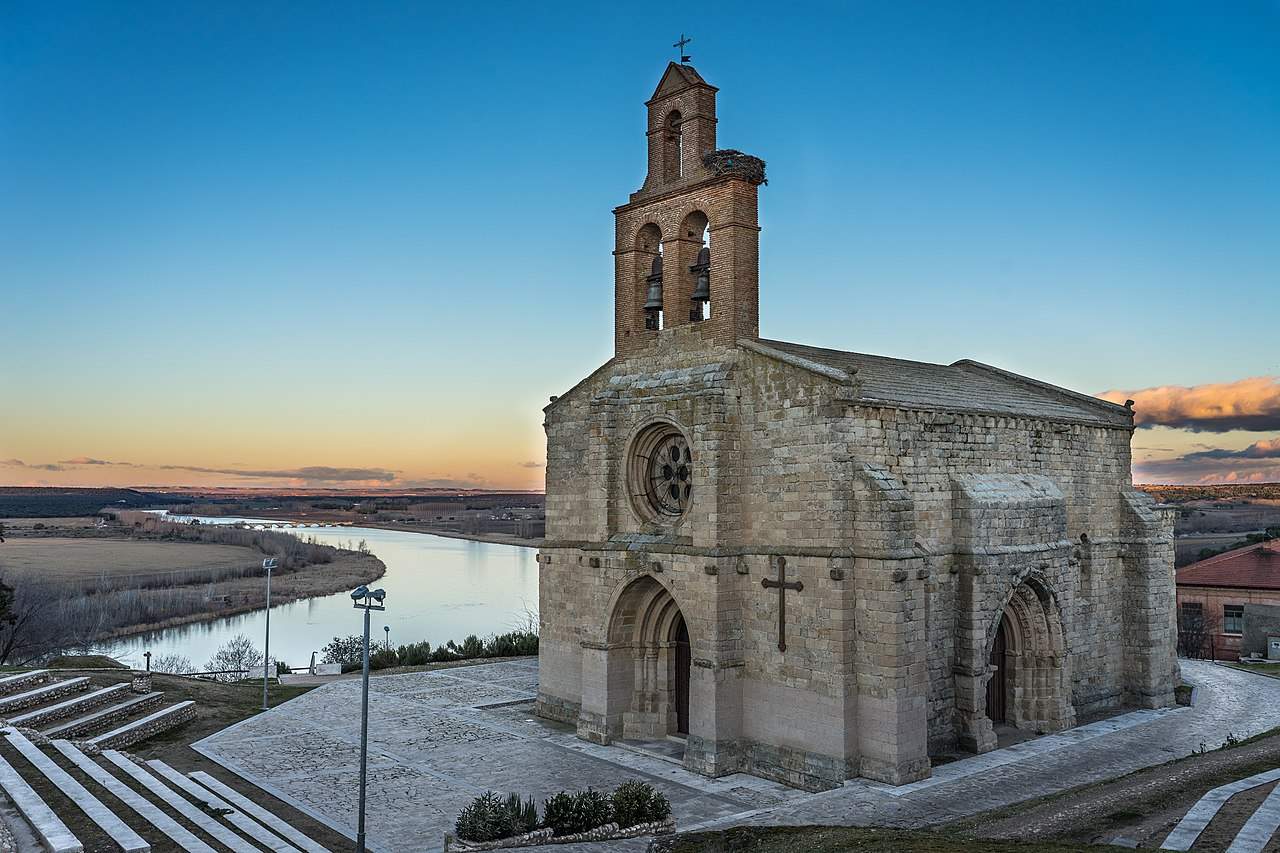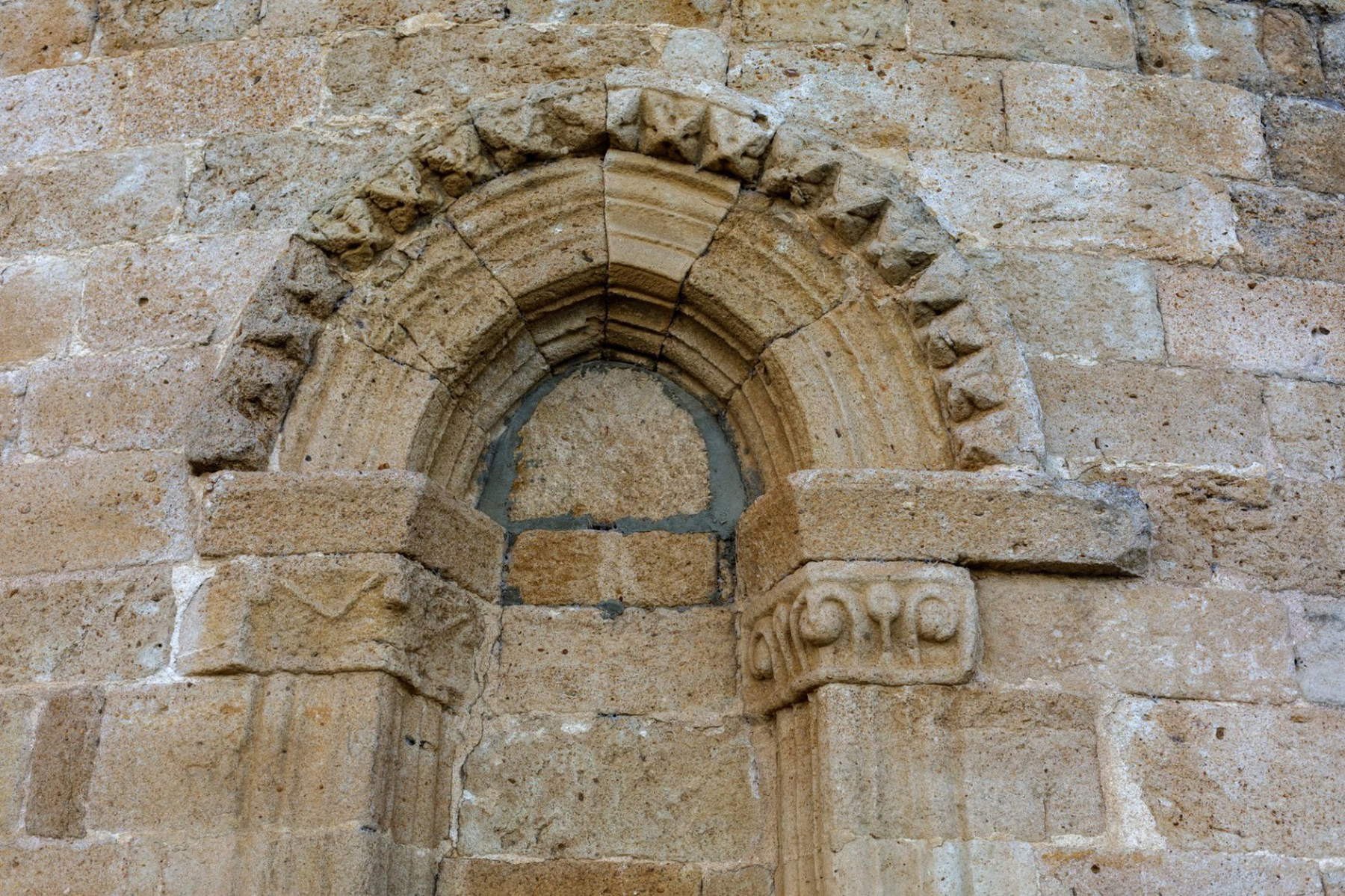In Spain there really seems to be no peace for restorations: to the long series of interventions gone wrong (the most famous of which is surely Elías García Martínez’sEcce Homo at the Santuario de Misericordia in Borja, restored so deplorably that it has become a pop icon) there was joined a few weeks ago by another that affected the ancient church of Santa María del Castillo in Castronuño, a village of 1,000 inhabitants in the Castile and Leon region, nestled on the banks of the river Duero in a scenic location an hour’s drive from Valladolid. “A Romanesque jewel has been damaged by a mysterious concrete restoration,” headlined El País: in fact, it is not known who is responsible for the intervention that defaced the 13th-century church.
The clumsy mortar insert added to an ancient single-lancet window was noticed by some passersby who immediately reported it to the authorities, and now it is the hunt for the improvised restorer, because no one knows yet who was the author of the improper work, nor when it dates back to. According to some residents, it was a recent change, while others believe that the concrete has been there for some time but only recently would they have noticed it. What is certain is that it only caused a stir after a Castronuño resident reported it on social media.


Castronuño Mayor Enrique Seoane told El País that “nothing can be done without the authorization of the archbishopric and the Heritage Institute, but no money is coming in.” The constant shortage of funds for restoration work is, in fact, one of the reasons why so many amateurs in recent years have taken to providing for themselves. And it could be that this time as well, not least because, the mayor recalled, the Castronuño church underwent its last interventions sixty years ago. Javier Castán, a professor of art history at the University of Valladolid and an expert on the church of Santa María del Castillo, about which he has written extensively, also spoke on the case. “It’s hard to believe that in a town of 800 inhabitants,” he said, “no one saw the person or persons who acted so sloppily and responsibly, unless it was a case similar to the Ecce Homo case in Borja.” In the Ecce Homo case, in fact, parishioner Cecilia Giménez, an amateur painter who had badly restored the work by Elías García Martínez, had acted on her own initiative, believing she had done nothing wrong.
The church of Santa María del Castillo is the symbol of the town of Castronuño: built in the 13th century, it overlooks the Duero from a panoramic position and is a compact building with a single, rectangular nave plan, closed by a semicircular apse. The façade has a splayed portal surmounted by a rose window, and the whole is closed by a characteristic bell gable. Inside, the space is punctuated by pointed arches that thus repeat those found outside. Santa María del Castillo also houses the funerary chapel of Fernán Rodríguez de Valbuena (c. 1270 - 1333), prior of the Hospitallers of St. John and an important figure during the reign of Alfonso XI. In fact, the church arose precisely to house his remains.
Lately, Spain truly seems to be the land of improvised restorers. Beyond the chronic lack of resources, another of the problems is the fact that the profession of restorer is unregulated, and often the Professional Association of Conservators and Restorers of Spain (ACRE) has expressed a firm desire to get things changed.
See also The 10 strangest or most disastrous restorations of recent times
 |
| Spain, yet another clumsy restoration: concrete in a 13th-century church |
Warning: the translation into English of the original Italian article was created using automatic tools. We undertake to review all articles, but we do not guarantee the total absence of inaccuracies in the translation due to the program. You can find the original by clicking on the ITA button. If you find any mistake,please contact us.